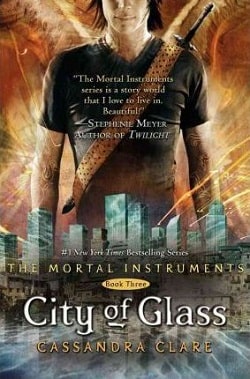Vibrant Earth, Desolate Moon, Stable Sea
From a mountaintop, he sees three new goats. A wolf attacks. It takes only meat. Thetoadlooks on.
Why would that be underlined? I thought through everything I’d encountered up until that point, and then I landed on something. Back in the abandoned building, there was an office that had reminded me of Charles. The painting in there had drawn my attention. It was a painting of a toad. It couldn’t be a coincidence. With absolute certainty, I knew that this must be the clue I’d missed. I had to get back into that office and examine that painting.
As I hurried back outside, I thought I heard Finn call after me, but I didn’t answer. I had a singular purpose now and couldn’t be distracted. There was a strange charge to the atmosphere as I started into the woods and along the trail to the abandoned building. When I reached the front door, I used Dorian’s card to open it and started down the hall to the office.
Inside that small room, every surface seemed to screamCharles. I could honestly still smell the ghost of his cologne. So where the hell was he? Ignoring the papers spread out over the desk, I went directly to the painting of the toad. I stood before it a moment, looking closely to see if there might be a clue somewhere in its design, but nothing immediately jumped out, aside from the fact that it was a pretty bad painting. Carefully I felt around the edges of the canvas, then lifted it down from the wall and turned it over. There on the posterior, I found exactly what I sought. A small key was taped to the canvas backing.
I removed the key and hurried back out into the hall, but as Istarted toward the conference room, I had a feeling I was being watched.
“Hello?” I called, but I was met with only silence. Shrugging it off, I hurried into the conference room and tried the key in the filing cabinet.
It turned with ease and opened to reveal a wealth of folders and a single white binder. When I grabbed one of the folders, a Hildegard brochure slipped out. It was a few years old and seemed to be fundraising material. Flipping through it, I saw a bunch of bland promotional photos and then a list of names at the end. They appeared to be the members of the board of directors. A few of them were circled. Something about the brochure gave me a bad feeling, but I couldn’t quite put my finger on why. I was about to look through it a second time when my gaze fell on the white binder, and I could barely believe what I was seeing.
It was large and white, with a plastic cover, and it had a label on the front:Project Bluebird.
My bluebird! I nearly screamed.
With tension in every muscle of my body, I sat down and opened it. I could barely believe what I’d found. Project Bluebird was a binder? It had never been a person. All along, it had been more research collected in one of Charles’s Luddite binders. I started reading, the minutes ticking by as I plunged into the only world I used to know. I tried my best to understand what I was reading. It was the work Charles and I had done together, but it was far beyond my current realm of understanding. I found the content completely unfamiliar, at least at first. The more I read, however, the more it felt like an unused part of my brain began to awaken, long-dormant synapses firing again, connections re-forming.
Much of our research revolved around the inherent neuroplasticity of the human brain. We had modified an existing piece of technology called a hippocampal prosthesis, and using electrodes inserted directly into brain tissue, we had done something called deep brain stimulation. We had been breaking down synaptic connections and essentially rewiring them. Through this process, we could alter the way people think, the way they remember. I found myself trapped somewhere between disgust and pride. The invasiveness of the procedure turned my stomach, but the fact that Charles and I had come up with it was pretty exciting to me. I read on, and with a sinking feeling, I began to realize that there had been testing on human subjects, or at least one human subject—Sabine Étienne. A photograph accompanied her biographical information, and when I saw her face clearly, I realized it was Paloma.
I know what you are,she’d said. People were stealing her memories, she’d written in that cry for help. I’d thought she’d been mad, but in reality, she was the sane one. Sabine Étienne really was Paloma. And we had done something to her. Had it been willing? It must have been. There was no way I would have subjected a person to invasive tests against her will. But what if it wasn’t against her will? Her grandmother had said she was obsessed with money and fame and desperate to be part of what happened up at Hildegard. If she had volunteered herself, if she had wanted to be part of the experiment, and if I had truly thought the experiment would be beneficial for humanity, would I have done it?
Whatever we’d done, it had begun to undo itself, possibly when I’d shown her the photo that night, the photo of the werewolf victim, which I now knew was a photo of her. It must have triggered something, and she’d realized I wasn’t her cousin.Instead, I was a very dangerous person she needed to get away from as quickly as possible. Her note had said she’d gone to California, but she’d probably just taken off and hidden somewhere in New York. She was probably still there.
Disconcerted, I stood up and stretched. This was getting to me. I knew I was close now, but there was still so much outside of my grasp. Setting the binder to the side momentarily, I returned to the cabinet and pulled out the pamphlet I’d found earlier. Something had bothered me about it before, but I couldn’t put my finger on it. Now slowly I paged through it, looking at the faces, putting names to them. On the second-to-last page was a photo of two men identified as the CFO and the chairman of the board of directors, respectively. The CFO had a name I recognized—Uta Hopper Symon. But it wasn’t just the name that was familiar; it was the face. He looked different, much more put together, wearing an expensive suit and boasting a winning smile, but it was the same man who had picked me up at the airport in Denver. It was Jim, the supposed handyman. I’d wondered why he’d been wearing an expensive watch to do yard work. I now knew he never was doing yard work. He’d been wearing a costume, to what? To spy on me?
Feeling increasingly uneasy, I put the brochure back and returned to the Project Bluebird binder, trying to make sense of what I could. The notes were pretty chaotic, and a lot of them would have made sense only to Charles. For instance, I found a loose sheet of paper covered in digits. They were sums, bursts of quick arithmetic, scrawled by a hasty hand—his, not mine. For some reason, I had a rush of anger when I looked at the piece of paper. This was important; I just didn’t know how. It was as if it was trapped just on the other side of a wall I couldn’t seethrough. Had I been angry with Charles in this reality, too? And if so, what could a bunch of numbers have to do with it? I folded up the paper and put it in my pocket. I would need to spend some time with it later.
As I read on, there was a lot that went over my head—mentions of hostile material and biohazards, but I couldn’t quite understand what any of that had to do with the work that we did. Also, although the hippocampal prosthesis was indeed a known piece of technology, there was no indication of exactly how we altered it. One thing, though, became very clear—this experimental procedure we had engineered involved putting the participant into a state that sounded very similar to sleep paralysis. I paused and stared up at the ceiling. Was this how Robin was created? And was it possible that as my memories started resurfacing, that paralytic state had been reactivated?
My head was spinning so I decided to take a break, but just as I was gathering everything back up, I noticed something in one of the notes that I’d missed on the first few passes. It was a note from me to Charles about an unsecured entrance on the northwest side of the observatory.
The observatory—the one they told me had been torn down. These were recent notes, less than a year old, which meant that the observatory was still standing. I just had to find it. I moved over to the table with the maps of campus and the blueprints of the island and started sifting through them. I couldn’t help but laugh when the truth of it struck me—I already knew exactly where the observatory was. It was the temple in the woods.
I straightened out all the papers, put the binder back in the filing cabinet, locked it, and then left to find this unsecured entrance. Dusk was just beginning to fall as I headed outside. I knew I had to find the temple, but I wasn’t exactly sure where itwas. Despite passing theTO OBSERVATORYsign multiple times, I was pretty sure I’d been on every trail on campus and hadn’t found it that way. And yet I’d managed to get there on my own twice before—once when I was out of my mind on psychedelics and once when Guillaume had chased me. Some part of me must have known where the observatory was both times, and for some reason that part had led me there when in a heightened state of consciousness.
As I headed through the woods, I did my best to relax and trust that I knew where I was going. It couldn’t be very far from the center of campus because I hadn’t run that far the night of my attack. I found the observatory path and started following it, but soon, trusting my instincts, I diverged, setting off through the trees until I came out at a familiar little clearing: the strange space with the yew tree.
Carefully I made my way down the slope and then came to stand at the tree. From there, I surveyed the area, the fence in front of me, the bushes to the side, until I found it—a break in the foliage on the left side of the tree. Hurrying over to it, I pushed through the thicket and cleared sapling branches out of my way until I emerged into a second clearing—the temple clearing.















